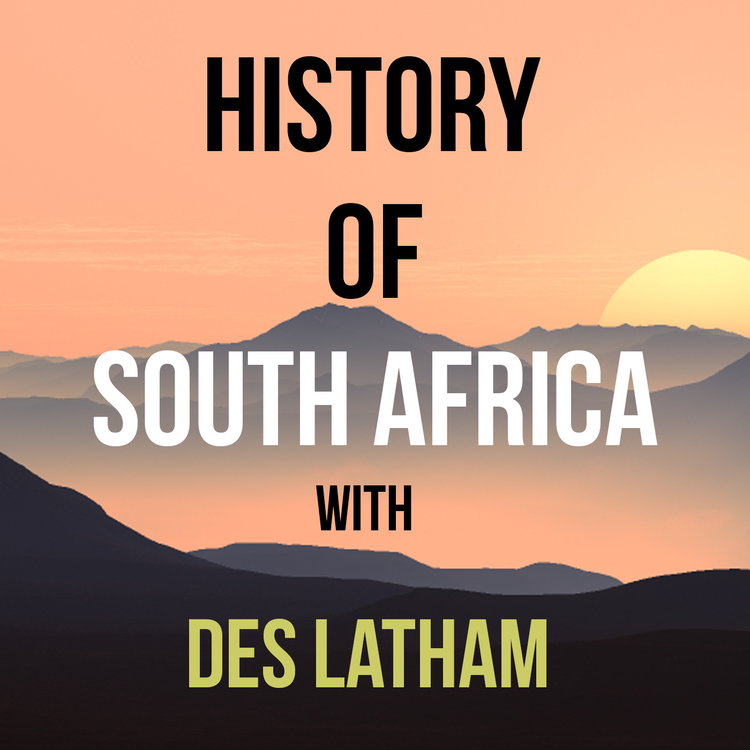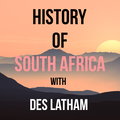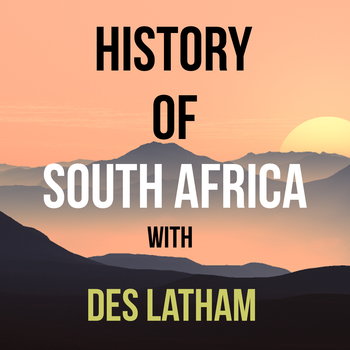
Episode 147 - Coloured enters the lexicon in 1838 as Captain Jervis reports his coal find
Loading player...
Cape Town was burgeoning — and trade was starting to pick up. There was also a paradox, the real effects of the emancipation of slaves back in 1834 was only really felt in 1838 because it was in that year the 38 000 slaves were finally allowed to leave their masters.
The abolition of slavery led to the creation of several private commercial banks, which then offered cheap credit to wage-labour employers. The British parliament allocated £20 million as compensation for those who had previously owned slaves and were now stripped on their erstwhile ‘property’ in inverted comma’s — to be shared out across it’s territories.
Of the twenty million, £1,247 000 was allocated to the Cape.
Though a certain proportion of this money got stuck in Great Britain in the hands of agents as we’ve heard in previous episodes, the amount that arrived in the Cape Colony, mainly in 1836–37, quintupled the sum of money in circulation.
This in turn caused a raising of prices, it was inflationary, and also led to increased labour costs.
Some of the money was invested in new banks, as well as providing capital to build new houses around the Cape. One of these was the Eastern Province Bank which launched in 1838 in Grahamstown - which went on to become Barclay’s Bank, and during the sanctions period of apartheid, it morphed into First National Bank.
Compensated emancipation at the Cape was a major social rupture, ending as it did 182 years of legal slavery, changing the legal status of these 38 000 people.
The slave-like apprenticeship period that followed emancipation in 1834 had now expired. Khoi, and other members of the free black community continued to work mostly in farm
employment, although a few became market gardeners or joined the small but growing artisanal class in the villages of the Western Cape.’
Emancipation at the Cape freed slaves into the category "free black," which encompassed all people of colour native to the Western Cape: "Hottentots" was the colonial term for the Khoi and "Bushmen" the colonial term for the San, "Bastards" were those who had a white father, Khoi mother and "Bastard Hottentots" were those who had a slave father and Khoi mother.
By the time of emancipation, the slave population of the Western Cape was predominantly
creole, including descendants of slaves brought from the west and east coasts of Africa, Madagascar, India, and the Dutch East Indies, and children born of a slave mother and a free father.
The close cultural and social relations between Khoisan and slaves and the incorporation of the Khoisan into the Cape colonial economy, also contributed to the heterogeneous culture of the rural poor at this stage.
The introduction of "prize negroes," who had been "rescued" from other nations' slave ships by the British and brought to the Cape from 1808 to 1815 and then again in the 1830s to remedy the labor shortage in the Western Cape, also served to increase the polyglot nature of the rural poor of the Western Cape.
This diversity of geographical and cultural origins affected the emergence of an official racial terminology to cover all of these groups to simplify matters.
Thus while the category of "free black" continued to be used into the 1840s in government correspondence regarding labor legislation. But from 1837 the statistical Blue Books began listing people of Khoi and San descent, free blacks, “prize negroes," and freed people under the category “Coloured."
The slave owners were a leisure class and now slaves were free, it was the start of the fourth decade of the 19th Century. The slaves had the skills, the leisure class, did not, and now this leisure class really needed the new banks.
So the abolition of slavery resulted in the liquidation of at substantial portion of the capital that had been invested in the individuals who were enslaved.
The abolition of slavery led to the creation of several private commercial banks, which then offered cheap credit to wage-labour employers. The British parliament allocated £20 million as compensation for those who had previously owned slaves and were now stripped on their erstwhile ‘property’ in inverted comma’s — to be shared out across it’s territories.
Of the twenty million, £1,247 000 was allocated to the Cape.
Though a certain proportion of this money got stuck in Great Britain in the hands of agents as we’ve heard in previous episodes, the amount that arrived in the Cape Colony, mainly in 1836–37, quintupled the sum of money in circulation.
This in turn caused a raising of prices, it was inflationary, and also led to increased labour costs.
Some of the money was invested in new banks, as well as providing capital to build new houses around the Cape. One of these was the Eastern Province Bank which launched in 1838 in Grahamstown - which went on to become Barclay’s Bank, and during the sanctions period of apartheid, it morphed into First National Bank.
Compensated emancipation at the Cape was a major social rupture, ending as it did 182 years of legal slavery, changing the legal status of these 38 000 people.
The slave-like apprenticeship period that followed emancipation in 1834 had now expired. Khoi, and other members of the free black community continued to work mostly in farm
employment, although a few became market gardeners or joined the small but growing artisanal class in the villages of the Western Cape.’
Emancipation at the Cape freed slaves into the category "free black," which encompassed all people of colour native to the Western Cape: "Hottentots" was the colonial term for the Khoi and "Bushmen" the colonial term for the San, "Bastards" were those who had a white father, Khoi mother and "Bastard Hottentots" were those who had a slave father and Khoi mother.
By the time of emancipation, the slave population of the Western Cape was predominantly
creole, including descendants of slaves brought from the west and east coasts of Africa, Madagascar, India, and the Dutch East Indies, and children born of a slave mother and a free father.
The close cultural and social relations between Khoisan and slaves and the incorporation of the Khoisan into the Cape colonial economy, also contributed to the heterogeneous culture of the rural poor at this stage.
The introduction of "prize negroes," who had been "rescued" from other nations' slave ships by the British and brought to the Cape from 1808 to 1815 and then again in the 1830s to remedy the labor shortage in the Western Cape, also served to increase the polyglot nature of the rural poor of the Western Cape.
This diversity of geographical and cultural origins affected the emergence of an official racial terminology to cover all of these groups to simplify matters.
Thus while the category of "free black" continued to be used into the 1840s in government correspondence regarding labor legislation. But from 1837 the statistical Blue Books began listing people of Khoi and San descent, free blacks, “prize negroes," and freed people under the category “Coloured."
The slave owners were a leisure class and now slaves were free, it was the start of the fourth decade of the 19th Century. The slaves had the skills, the leisure class, did not, and now this leisure class really needed the new banks.
So the abolition of slavery resulted in the liquidation of at substantial portion of the capital that had been invested in the individuals who were enslaved.

